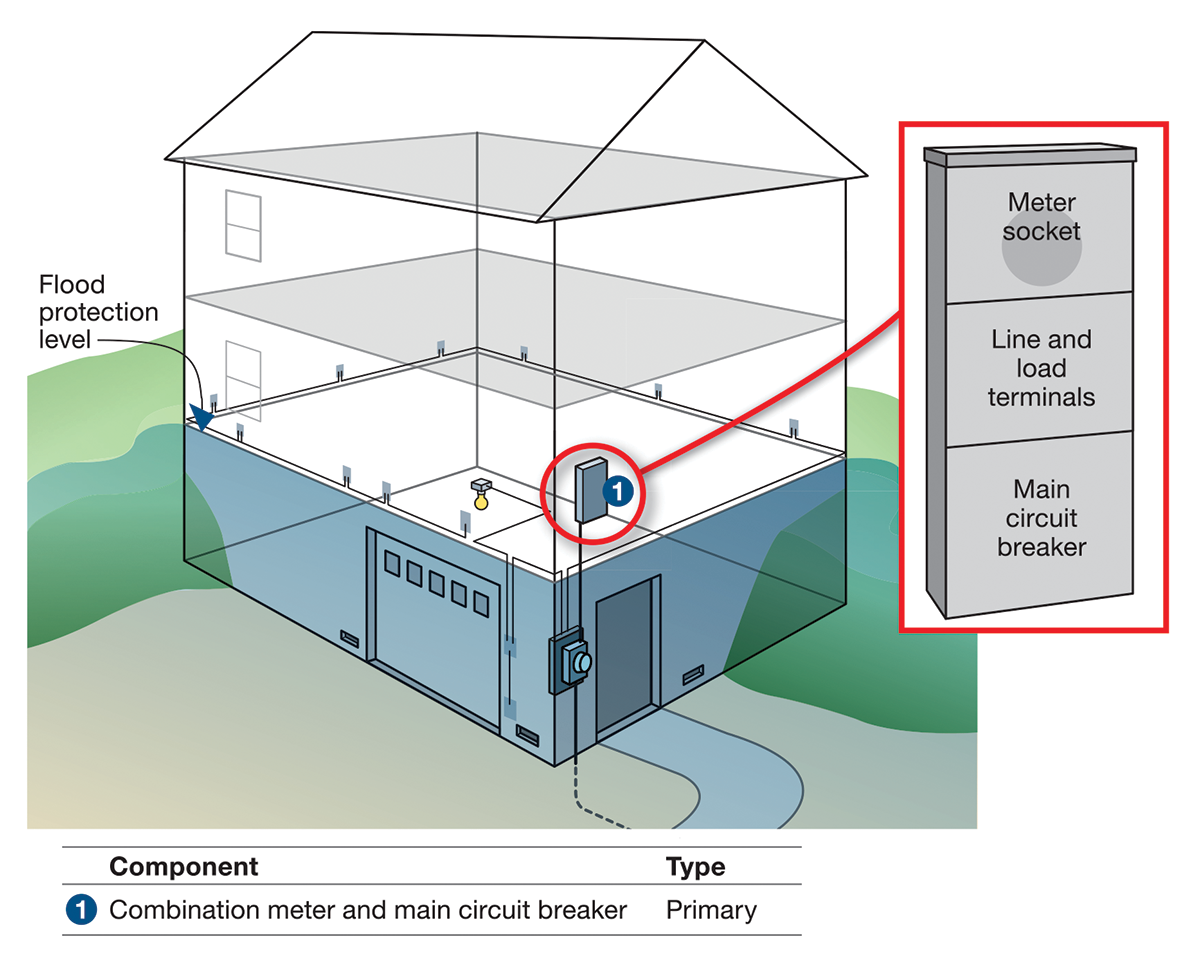NYS Resilient Retrofits 50/50 Loan/Grant Program - Examples of Eligible Flood Mitigation Projects
Flood Vent Installation
This floodproofing method involves adding openings beneath the lowest floor of your home to allow water to enter and exit in the event of a flood without causing structural damage. In the event of a flood, water can flow into and out of your home freely through the vents, with no need for human intervention, which will reduce the risk of structural damage to your walls or foundation.
Equipment Elevation - Including Heat Pumps
Relocating mechanical equipment above the flood elevation or out of your basement could significantly reduce the risk of critical systems being damaged during a flood. Raising mechanicals will not significantly reduce flood insurance premiums. Installing a heat pump is an eligible flood mitigation activity.
Sump Pump Installation
A sump pump is a small pump installed in the lowest part of your basement. Its purpose is to collect subsurface water from the ground near your home’s foundation and pump it out to your yard to keep your basement dry.
Backwater Valves Installation
Designed to keep raw sewage out of your home in the event of sewer overflow. A backwater valve connects to your home’s plumbing and features an internal mechanism called the “flapper.” In the event of sewer overflow, the flapper closes to help protect your home from filling with raw sewage.
Backflow Preventers Installation
Backflow preventers stop sewer and stormwater from entering your home through sinks, toilets, and bathtubs when the systems surrounding your home are overwhelmed with flood water.
Flood Resistant Building Materials
An example of flood resistant building materials is tile versus carpeting. If your basement has tiles instead of carpet, clean up will be easier if you replace the carpet with tiles. It could reduce the cost of repairs from the water damage.
Interior of Building Systems Floodproofing
Sealing buildings to keep water out using passive or active mechanical devices such as concrete ring walls around a boiler, floodproof doors, or barriers.
Flood Damage Resistant Materials Installation
This floodproofing method involves using materials that reduce flood damage and speeds post-flood clean up. Such materials include non-paper-faced gypsum board and terrazzo tile flooring and can also include the use of floodproof cabinets and the replacement of wooden doors.
Other Floodproofing Projects that may be Eligible:
Wet Floodproofing refers to a range of strategies to prevent or provide resistance to flood damage—while allowing water into the uninhabited portion of a building (e.g., unfinished basement, crawlspace). For example, the installation of flood vents allow water into the structure, equalizing interior or exterior pressures to avoid structural damage. Wet floodproofing is often combined with equipment elevation to provide further protection.
Dry Floodproofing refers to a range of strategies to seal the exterior of a building from flood waters. For example, heavy plastic sheeting or a waterproof membrane may be installed along a home’s exterior wall to prevent water from entering the home. Due to the risk of structural failure from flood forces, dry floodproofing is not advised for homes with basements or homes constructed with weaker materials (e.g., wood frame with siding). Please also note that dry floodproofing will not reduce flood insurance premiums.
This program will also allow you to finance eligible energy efficiency and electrification improvements as long as there is one flood mitigation component. Eligible energy efficiency and electrification improvements include:
Energy Efficiency: Installing insulation in the walls, ceilings, and floors, reducing air infiltration and pressure imbalances, and sealing and repairing ducts.
Purchase and Installation of Appliances: Replacement of appliances with energy efficient appliances and/or high-performance windows.
Purchase and Installation of All-Electric HVAC: Fossil-fuel combustion heating and cooling systems, which are at the end of their useful life, may be eligible for replacement with air- or ground-source heat pump systems.***Can be considered a flood mitigation activity if heat pump is installed above ground (not in basement).








